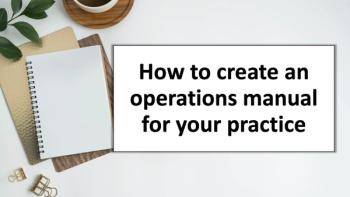
What’s Your Number?
Family-practice doc David Albenberg explains his move from traditional care to concierge medicine and offers tips for figuring out what number works for you.
In 2003, after only seven years in practice, I had a patient panel size of 3,500. I referred to myself as a “premature casualty of a broken system,” although to be honest, I wasn’t certain it was the system. I had begun to suspect that I was broken.
I felt crushed by the pressure to have as high a number as possible. Trouble was, my daily load - 25 patients a day - wasn’t very high in comparison to others. I remember learning about a legendary family doc in our community who was reported by many to see 70 patients a day. One of my partners was cranking through upwards of 40 - even through a painful divorce.
Was I the only family doc who felt uncomfortable seeing more than 25? Any more than that and I wouldn’t be able to continue to call all of my patients back - an obsessive but patient-appreciated ritual that had become my trademark. Beyond 25, I couldn’t research unusual patient presentations and I couldn’t personally coordinate care to make certain the ball wasn’t dropped somewhere. And the hours? Anything more than 40 and I couldn’t take care of myself well enough to take care of my patients and really be there for them in their times of need.
I realized that 3,500 was no longer a number with which I could be associated because it kept me from being the doctor I knew I could - and wanted - to be. So I left traditional, volume-based medicine to retool myself and my practice into one that centered on patients. I embarked in a new direction hoping to find, create, or perhaps, just stumble into an environment where even simple-minded, slow-moving doctors like me could practice good medicine and gain professional satisfaction.
I wasn’t exactly sure what I was getting into, but I needed to find a new number that would work for me, and for my patients. With that mission, my practice morphed quickly into a retainer-based practice which we now know as “concierge medicine.”
Sometimes I get asked about the ethics of “abandoning” patients. My answer? It’s not a matter of ethics, frankly; it’s a matter of effectiveness. I wonder, who established that one physician should be the medical home for 3,000 to 5,000 patients, and why is that the ethical high ground from which all physicians should be judged? If another doctor can offer an effective medical home for 3,000 patients, more power to ’em. I couldn’t and I won’t.
Six years later, I have found my number - 300 - and I have found my peace. Want to find yours? Here’s how to begin figuring that out:
- Shrink to grow. Consider the idea that to be a better doctor and grow professionally as a physician, you may first need to reduce your patient volume.
- Just say no. As physicians, particularly as primary-care physicians, we are hard-wired to take all comers, to be “yes” people and to “work it in.” Give some thought to how this mindset - collectively built over decades - has contributed to our current access problems. Set boundaries and stick to them.
- Make it a zero-sum game. Time is finite. We can no longer “just see more patients.” Do today’s work today.
Take-away thought: If we give to Peter, we must rob from Paul. If we give to
both
Peter and Paul, we will probably keep one of them waiting, and ultimately, we rob ourselves.
David Albenberg, MD, a board-certified family medicine specialist, opened South Carolina's first retail medicine primary-care practice, Access Healthcare, in 2003. He focuses on disease prevention and wellness maintenance. He can be reached at
This article originally appeared in the January 2010 issue of Physicians Practice.
Newsletter
Optimize your practice with the Physicians Practice newsletter, offering management pearls, leadership tips, and business strategies tailored for practice administrators and physicians of any specialty.








